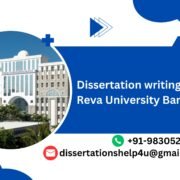Dissertation writing for MS Ramaiah-University MBA
Dissertation writing for MS Ramaiah-University MBA
Understanding the Significance of Dissertation for MS Ramaiah-University MBA
Dissertation writing for MS Ramaiah-University MBA. In the pursuit of academic excellence at MS Ramaiah University, the dissertation stands as a cornerstone for MBA students. This pivotal academic exercise serves as a culmination of their learning journey, allowing them to showcase their expertise, critical thinking abilities, and research acumen. Let’s read our blog “Dissertation writing for MS Ramaiah University MBA“.
Navigating the Dissertation Process
Embarking on the dissertation journey necessitates a clear roadmap and strategic planning. From selecting a compelling topic to conducting thorough research and crafting a well-structured paper, each step demands meticulous attention to detail.
Choosing a Relevant Topic
The first crucial step in dissertation writing is selecting a topic that not only aligns with the student’s interests but also contributes to the existing body of knowledge in their field. Keywords such as “innovation management,” “strategic leadership,” or “sustainable business practices” can guide students in narrowing down their focus area.
Conducting In-depth Research
Once the topic is finalized, students delve into extensive research to gather relevant data, scholarly articles, and case studies to support their thesis statement. Utilizing online databases like ProQuest and EBSCOhost, as well as academic journals such as Harvard Business Review and Academy of Management Journal, can enrich the literature review section of the dissertation.
Crafting a Structured Framework
A well-organized dissertation follows a clear structure comprising introduction, literature review, methodology, findings, discussion, and conclusion. Each section serves a distinct purpose, contributing to the overall coherence and persuasiveness of the argument presented.
Implementing Methodological Rigor
The methodology section elucidates the approach undertaken to collect and analyze data. Whether employing qualitative, quantitative, or mixed methods research, adhering to methodological rigor is imperative for ensuring the validity and reliability of the study’s findings.
Presenting Compelling Findings
The findings section presents the outcomes of the research endeavor, often supplemented with tables, charts, or graphs for clarity. SPSS or STATA may be utilized for statistical analysis, providing empirical evidence to support the dissertation’s claims.
Engaging in Critical Discourse
The discussion section offers a platform for critical analysis, interpretation of results, and contextualization within existing literature. Here, students demonstrate their ability to synthesize information, identify implications, and propose avenues for future research.
Conclusion: Dissertation writing for MS Ramaiah-University MBA
In conclusion, the dissertation represents a culmination of the academic endeavors undertaken during the MS Ramaiah University MBA program. It signifies not only the acquisition of knowledge and skills but also the capacity to contribute meaningfully to the field of business administration.
Frequently Asked Questions: Dissertation writing for MS Ramaiah-University MBA
1. What is the recommended length for a dissertation at MS Ramaiah University?
At MS Ramaiah University, MBA dissertations typically range from 10,000 to 15,000 words, excluding appendices and references. However, students are encouraged to consult their respective faculty advisors for specific guidelines pertaining to their discipline.
2. How long does it take to complete a dissertation at MS Ramaiah University?
The timeline for completing a dissertation varies depending on factors such as the complexity of the research topic, availability of resources, and individual pace. On average, students should anticipate dedicating six to twelve months to the dissertation process, from topic selection to final submission.
3. Can I collaborate with industry partners for my dissertation research?
Yes, MS Ramaiah University encourages students to engage with industry partners, organizations, or startups for collaborative research initiatives. Such partnerships not only enrich the research experience but also foster practical insights and networking opportunities for students aspiring to enter the workforce post-graduation.
Thank you for read our blog “Dissertation writing for MS Ramaiah-University MBA”. I hope this blog is helpful to you, if you have any question feel free Call / WhatsApp: +91 9830529298 || Email: dissertationshelp4u@gmail.com.
Also read our more BLOG here.
#DissertationWriting, #MSRamaiahUniversity, #BangaloreMBA, #MBAStudents, #ResearchAssistance, #AcademicSupport, #ThesisHelp, #MBAProgram, #DissertationAssistance, #HigherEducation, #AcademicLife, #MBAStudies, #MSRamaiahUniversityBangalore, #GraduateStudies, #ResearchWriting, #AcademicWriting, #MBACommunity, #MBAResearch, #ThesisJourney, #MBAEducation






